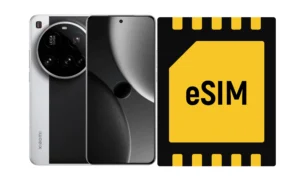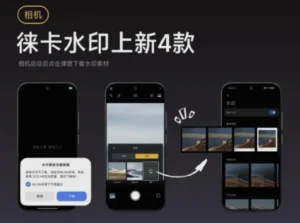How Xiaomi Continues to Lead India’s Smartphone Market Despite Realme’s Rise
Xiaomi’s journey in India has been a remarkable tale of innovation, value, and resilience. From the groundbreaking Redmi Note series to the fan-favorite Poco F1 and K20 Pro, Xiaomi redefined what Indian consumers could expect from a smartphone—top-tier hardware, unbeatable pricing, and a loyal “Mi fan” community that championed the brand. While competitors like Realme have made waves in recent years, Xiaomi remains a powerhouse in India, adapting to challenges and reinforcing its dominance in 2025.
Recent IDC data show Vivo leading with a 16.6% market share, followed by Samsung at 13.2%. Xiaomi and Realme are neck-and-neck, each commanding 11-12% of the market. Realme boasts a 69% year-on-year growth in Q4 2023 and ambitious goals of reaching 18% in 2025, but Xiaomi’s consistent performance and deep-rooted presence in India tell a different story—one of a brand that’s far from losing its edge.

Xiaomi’s Software Evolution
Critics often point to MIUI—and now HyperOS—as a weak spot, citing bloatware and ads as pain points. But Xiaomi has listened. HyperOS, launched as a sleek, modern evolution of MIUI, brings smarter AI features, smoother performance, and a refined user experience. While some ads remain in budget models to keep prices low, Xiaomi has scaled back interruptions on premium devices, ensuring a cleaner, more premium feel for users who invest more. Compare this to Realme UI, which, while lighter and less ad-heavy, lacks the depth of customization and ecosystem integration Xiaomi offers—a key advantage for India’s tech-savvy users.
A Portfolio That Covers All Bases
Xiaomi’s strength lies in its diverse lineup. From the budget-friendly Redmi A series to the performance-driven Poco models and the premium Xiaomi 15 series, the brand caters to every segment. Realme’s portfolio—spanning the C-series, Narzo, and GT lineup—may seem balanced, but Xiaomi’s offerings are broader and more refined. The Poco F1’s legacy lives on in devices like the Poco X7, delivering flagship-grade processors at midrange prices, while the Redmi Note series continues to dominate with its all-round appeal.
Yes, Xiaomi’s push into the premium segment (₹50,000+) faced skepticism, but it’s a calculated move to evolve beyond its budget-brand image. Unlike Realme, which focuses heavily on aggressive pricing, Xiaomi balances affordability with aspirational devices, appealing to both first-time buyers and those upgrading to flagship experiences.
Winning Over Enthusiasts
Realme’s GT Neo series may have caught the eye of performance enthusiasts, but Xiaomi hasn’t abandoned this crowd. The Poco lineup remains a favorite for those craving raw power, with successors to the F1 and K20 Pro delivering the same thrill—flagship chipsets, fast charging, and gaming-ready features. While Realme and others filled a gap during Xiaomi’s premium pivot, Xiaomi’s return to form with enthusiast-focused midrange devices proves it hasn’t lost touch with its core audience.
Gaming and Beyond: Xiaomi’s Broader Vision
India’s gaming boom—driven by titles like BGMI and Free Fire—hasn’t escaped Xiaomi’s notice. Realme may tout 90fps and 120fps gaming support, but Xiaomi’s Poco and Redmi devices offer similar optimizations, paired with superior cooling tech and larger batteries for extended play. Beyond gaming, Xiaomi focuses on holistic innovation—stunning AMOLED displays, cutting-edge cameras, and ultra-fast charging (up to 240W in some models)—ensuring its phones aren’t just gaming tools but all-round performers.
Pricing That Defines Value
Realme’s aggressive pricing is bold, but Xiaomi invented the game of delivering flagship features at budget prices. The Poco F1 set the standard, and Xiaomi continues to play it smart—offering high-refresh-rate displays, powerful processors, and premium designs without breaking the bank. While Realme floods the market with value-driven specs, Xiaomi’s pricing reflects a blend of affordability and quality, maintaining its reputation as India’s value-for-money king.
Xiaomi: Still the People’s Choice
Ask an Indian smartphone buyer in 2025 where their money’s going, and Xiaomi remains a top contender. Realme may feel fresh, but Xiaomi’s legacy of trust, reliability, and innovation keeps it ahead. HyperOS-powered devices come packed with features—AI enhancements, privacy tools, and seamless performance—that rival or surpass Realme’s offerings. Xiaomi phones don’t just feel complete; they feel like a brand that’s grown with its users.
The Road Ahead for Xiaomi India
Realme’s rise is a challenge, not a defeat. Xiaomi’s grip on India’s budget and midrange segments remains firm, and the Xiaomi 15 series has reignited excitement among tech enthusiasts. To stay ahead, Xiaomi is doubling down on what made it great—India-specific devices that blend flagship performance, gaming prowess, and aggressive pricing. The brand’s Chinese innovations—like foldables and cutting-edge cameras—could soon hit Indian shores, tailored to local tastes.
India’s smartphone market rewards those who listen and deliver. Xiaomi’s track record proves it’s not just surviving—it’s thriving. While Realme pushes forward, Xiaomi’s ability to adapt and innovate ensures it remains India’s go-to smartphone brand.







